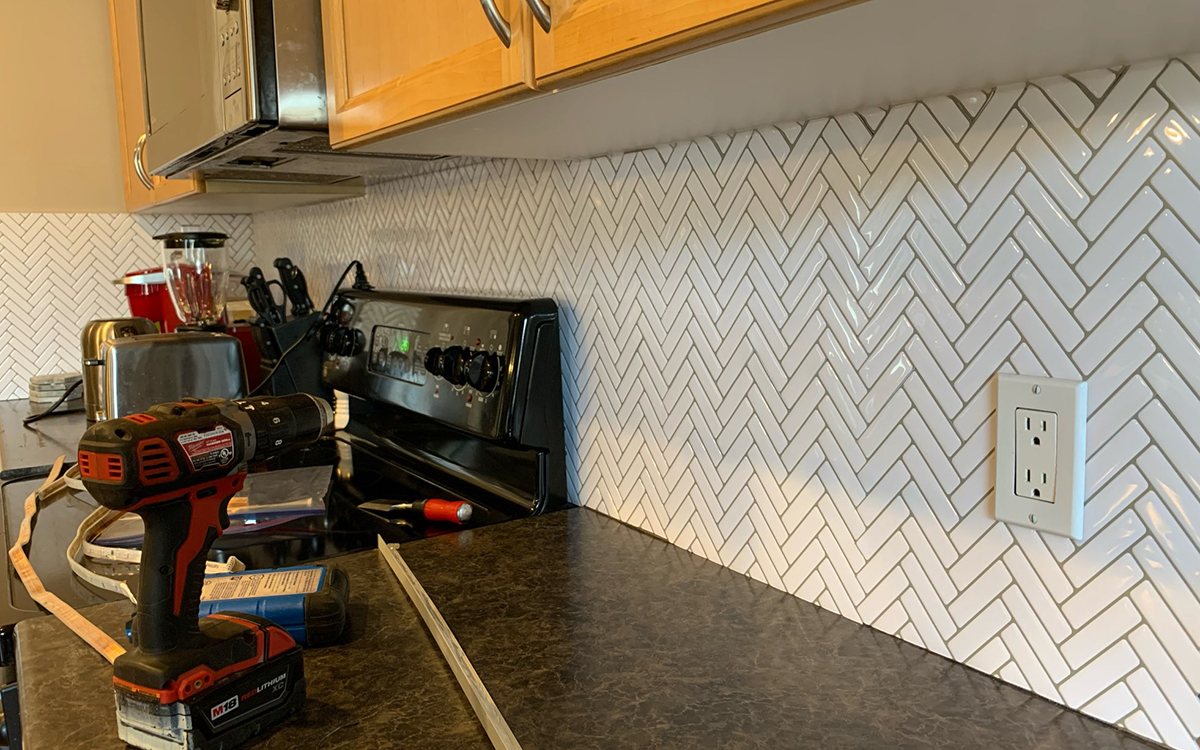Peel and stick backsplash is a good choice when you’re looking for a way to refresh your kitchen or bathroom walls without spending a fortune. But before you make your decision, here are things you need to know about the peel and stick backsplash tiles.

A peel and stick backsplash is a type of wall covering that mimics the look of tile, stone, metal, wood, or other materials. It comes in self-adhesive panels that you can easily apply to your wall with no grout, glue, or tools required. A peel and stick tile can offer many benefits for homeowners when change up their decor without too much hassle. Here are some of the advantages of using a peel and stick backsplash:
- It’s affordable. A peel and stick backsplash is much cheaper than installing real tile or stone. You can expect to pay $3 per sqft of vinyl stick tiles. Real 3D tiles made from gel or thicker upgrade run a bit more—as much as $5 per individual panel.
- It’s easy to install. A peel and stick backsplash is designed for DIYers who don’t have much experience with tiling or carpentry. All you need to do is measure your wall, cut the tiles to fit, peel off the backing sheet, then press the tiles onto the wall. You can also adjust them easily if you make a mistake.
- It’s versatile. A peel and stick backsplash comes in a variety of styles, colors, patterns, and textures that can suit any taste or theme. You can find realistic-looking 3D images of marble, granite, ceramic, mosaic, metal, wood, and more. You can also mix and match different panels to create your own custom design.
- It’s durable. A peel and stick backsplash is made from water-resistant materials that can withstand heat, moisture, stains, and scratches. You don’t have to worry about grout lines cracking or mold growing behind the tiles. You can also easily clean them with a damp cloth or sponge.
- It’s removable. A peel and stick backsplash is not permanent, so you can change it whenever you want without damaging your wall. You can simply peel off the panels when you’re ready for a new look or when you’re moving out.
How to Choose the Best Peel and Stick Backsplash for Your Space
Before you buy a peel and stick backsplash for your kitchen or bathroom, there are some factors that you should consider:
- Placement: The usual spot to install a peel-and-stick backsplash is on the wall right above the countertop. Starting at one end of the counter and working your way to the other end might not provide the best results, however, because you could end up with a sliver of a panel at the far end. To get panel placement even on both ends, make a “dry layout” on the countertop in front of the backsplash. This way you can see exactly where the lines will fall and center the panels evenly.
- Material: There are a lot of peel and stick backsplash tiles with materials as vinyl, metal, PVC, glass and wood. Different material may need different installation skills. If you are a non-experience beginner, the vinyl peel and stick tiles is a good option. If you are a professional guy, may be you can try the peel and stick glass and metal tiles.
- Size: Peel-and-stick backsplashes are usually packaged in large sheet chunks (normally 10×10 or 12×12 inches). Normally sold in boxes containing sheets that usually total anywhere from 10 to 15 feet of coverage. Measure your wall area carefully before buying so that you don’t end up with too much or too little material. You may also need to cut some panels to fit around outlets, switches, or windowsills. Use scissors or an utility knife for vinyl panels, and glass cutters for gel or glass panels.
- Style: There are a lot of peel-and-stick backsplash designs in the market. You can select the right personal preference style to match the overall aesthetic of your kitchen or bathroom. Then choose the neutral color or pattern to complements your existing cabinets, countertops, and fixtures. Also, it is a good way adds some drama and personality to your space. You may also want to consider the texture and dimensionality of your panels: some are flat and smooth, while others are raised and textured. Some even have real mosaic tiles made from thin natural stones.
